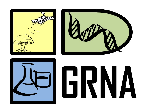Banca de DEFESA: LUCAS ALVARENGA DA SILVA
Uma banca de DEFESA de MESTRADO foi cadastrada pelo programa.STUDENT : LUCAS ALVARENGA DA SILVA
DATE: 30/08/2022
TIME: 14:00
LOCAL: https://meet.google.com/ewd-xbrs-ixz
TITLE:
Secondary metabolites in cupuaçu (Theobroma grandiflorum Schum.) bark extracts and effects of the addition of the extract on the growth of Lactobacillus plantarum LP 62
KEY WORDS:
Biotransformation, Industrial waste, Probiotic, Phenolic, Theobroma grandiflorum, Cupuaçu.
PAGES: 60
BIG AREA: Outra
AREA: Ciências Ambientais
SUMMARY:
Cupuassu (Theobroma grandiflorum Schum.) is one of the most important fruits of the Amazon due to its characteristic flavor and aroma, in addition to the use of its pulp in the food industry and the seeds in cosmetic formulations. About 27 thousand tons of the fruit are produced in the State of Pará, where 109 tons are only in the municipality of Santarém. The exploitation of the fruit generates a significant amount of waste, since approximately half is from peels that have no use and that could become a source of molecules with antioxidant power and of biotechnological interest. The use of microbial biotransformation as a biotechnological strategy for the production of bioactive molecules has been gaining attention and for this purpose, lactic acid bacteria such as Lactobacillus spp. are of interest because they can modify the chemical structure of glycosylated phenolic compounds, enhancing their biological activities. Therefore, the works presented here aimed to: 1- chemically characterize the extracts obtained from agroindustrial residues of cupuaçu and evaluate the potential of application as an inhibitor of the growth of pathogenic bacteria in fish; 2- to evaluate the effects of fermentation of extracts of agroindustrial residue from the peel of the fruit of T. grandiflorum by Lactobacillus plantarum LP62 and 3- verify the antimicrobial potential of the fermented extract against fish pathogens. In chapter 1 we describe that the extracts obtained from residues of the bark of T. grandiflorum showed significant concentrations of phenolic compounds, in addition, despite not showing bactericidal potential, they were able to partially inhibit the microbial growth of the challenged
strains. By chemical analysis via HPLC-ESI-MS/MS approach, we suggest the presence of 9 compounds in the extracts and inner membrane of the fruit, substances that have biological activities of industrial interest. In chapter 2 we did not observe a significant difference between the microbial growth index in the media supplemented with the extract and we demonstrated that there was no significant difference between the pH of the MRS medium plus extract when compared to the control. We observed small changes in the chromatographic profile of the fermented extract compared to controls and the same fermented extract showed antimicrobial activity against Aeromonas hydrophila. We conclude that cupuaçu (T. grandiflorum) bark extracts, rich in bioactive substances, have the potential to be used in fermentation processes and in the production of new functional bioproducts aimed at the cosmetic and aquaculture industrial sectors.
BANKING MEMBERS:
Presidente - 152.758.687-15 - LAURO EUCLIDES SOARES BARATA - UFOPA
Externa ao Programa - 1833953 - SILVIA KATRINE RABELO DA SILVA
Externo ao Programa - 2383549 - GUSTAVO DA SILVA CLAUDIANO
Externo à Instituição - ISABELLA CRISTHINA GONÇALVES COSTA




